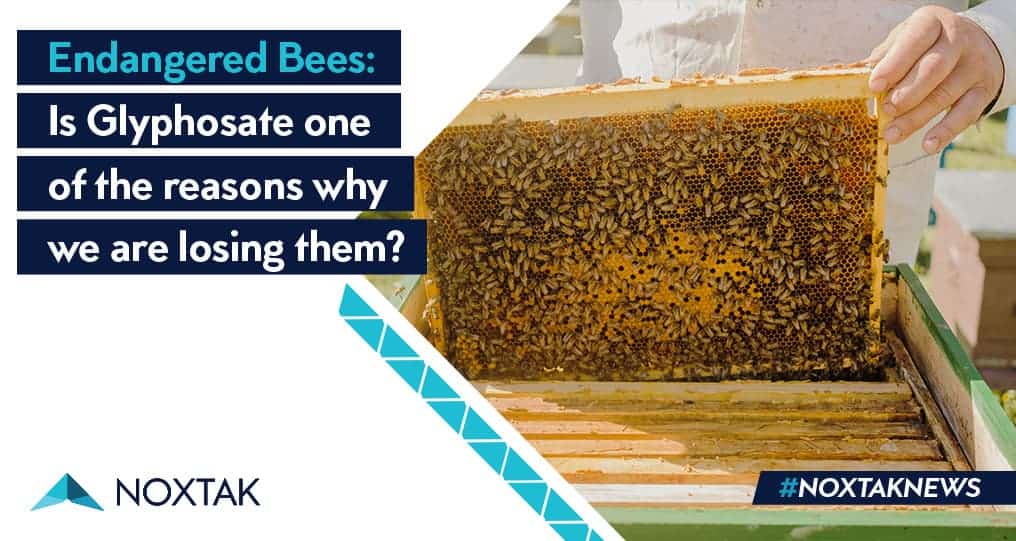Increased mortality of honey bee colonies has been attributed to several factors but, up to now, the reasons are not yet fully understood. Glyphosate, a broadly used herbicide, is being discussed as one of those reasons. But how can this innocuous herbicide be affecting them?

At the NOXTAK Center, we care about environmental health, and one of our main purposes is to protect both human health and the different ecosystems from the many sources of environmental toxins and threats that endanger them. That’s why, on this occasion, we want to talk about Glyphosate.
Glyphosate has been broadly mentioned lately because of its suspected hazardous effects. Some studies have suggested an association between exposure to glyphosate and a higher risk of non-Hodgkin lymphoma (NHL), a cancer of the white blood cells.
But concerns about glyphosate are not only limited to human health. Researchers have been accumulating evidence that glyphosate may also be having deleterious effects on the environment and be harmful to fish, crustaceans, amphibians, and beneficial bacteria and other microorganisms in soil and water.
What’s Glyphosate, and how does it work?
Glyphosate is a popular herbicide used to kill certain plants and grasses, manage how plants grow, get crops ready for harvest, and ripen fruit. It’s the active ingredient in popular weed-control products like Roundup, Rodeo, and Pondmaster. Many farmers use it during food production.
Glyphosate is a non-selective herbicide, meaning it will kill most plants. It prevents the plants from making specific proteins that are needed for plant growth. Glyphosate stops a particular pathway of an enzyme called the shikimic acid pathway, which is necessary for plants and some microorganisms.
The effect of Glyphosate on Bees
The herbicide glyphosate is expected to be innocuous to animals, including bees because it targets an enzyme only found in plants and microorganisms. However, bees rely on a specialized gut microbiota that benefits growth and provides defense against pathogens.
Most bee gut bacteria contain the enzyme targeted by glyphosate but vary in whether they possess susceptible versions and, correspondingly, intolerance to glyphosate. This means that exposing bees to glyphosate may alter the bee gut community and increases susceptibility to infection by opportunistic pathogens.
Although the herbicide does not appear as toxic to bees as some other pesticides (notably neurotoxins known as neonicotinoids), researchers have found that glyphosate may impact bees in more subtle ways, like impeding the growth of bee larvae, diminishing bees’ navigational skills, altering their foraging behavior, or even disrupting their gut microorganisms, known as the microbiome.
But Glyphosate is not the only and main threat. According to Bee Culture, new research by the University of London indicates that inert ingredients added to the herbicide, such as wetting agents called surfactants, might be the real culprits of Bee Colonies’ mortality.
Surfactants and other ingredients may suffocate the bees by blocking their tracheal systems, according to the study. Researchers have already established that surfactants are toxic to honeybees and solitary bees. This was the first significant study finding similar threats to bumblebees.
These compounds are added to the many chemicals and external environmental factors (such as EMF) affecting Bees and broadly causing Colony collapse disorders.
So what do we do to protect them? Like we are working towards a new standard to manufacture and use clean technologies to protect bees and other endangered species from EMF, there has to be a change in the industry’s labeling and production practices. But most importantly, there has to be a broad and real change in our farming practices, prioritizing greener processes and solutions that are toxins-free.
